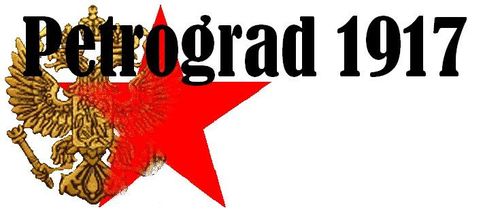|
Advertisement
|
Petrograd 1917

DescriptionSoviet historians tended to see the Great October Socialist Revolution as irrefutable proof of the inevitable scientific laws of economics as pronounced by Marx and interpreted by Lenin. Liberal historians tend to focus on the political and ideological background of the revolution and ignore the social and economic issues. Left wing historians, particularly Anarchist writers, tend to view the revolution as the expression of the mass will to reject authoritarian intervention in their liberty and freedom. Revisionist historians consider the revolution as arising primarily from below, that is, from the peasants and the workers. And most historians tend to take an obligatory swipe at the Tsar, Tsarina and Rasputin, and then ignore the bureaucracy, the armed forces high command (Stavka) and the bourgeois reactionaries forever after. Rather than attempt to justify one or the other of these dogmas, perhaps it would be easier to realize that Russia in 1917 was an enormous paradox. She was one of the largest countries in the world in terms of both area and population, yet her economy was primitive and underdeveloped, and 85% of her population consisted of illiterate and superstitious peasants with no interests in anything much beyond the limits of their own villages, least of all politics. Russia was about a century behind the development of the other Great Powers, and although she was finally trying to catch up, she was handicapped by a political system and an absolute monarch that were simply unequal to the 20th Century. When the revolution finally came, it was solely Russian, which is to say, a national phenomenon with a traditional outlook; and it adhered to the Standard Operating Procedures for revolutions, which is to say, that it was initiated by the moderates and then ultimately taken over by the extremists. But to Lenin and his Bolshevik organization, the revolution was going to have a global outlook with the intent of imposing Lenin’s vision of socialism on the entire world. Regardless of the name given to the events in Petrograd in 1917, the facts are that there was a popular revolution followed by a Bolshevik coup d’état. Petrograd 1917 starts with the popular revolution that had been initiated by the moderates, was taken over by the extremists, and then succumbed to the inevitable coup d’état. Players will find that staging a successful coup will not be as easy as it was for Lenin, who was blessed with the unwitting but invaluable assistance of Kerensky. This is a card-based simulation for 2 to 6 players, each of whom will try to create a political organization and help it to gain influence, so that it becomes the predominant political party in Russia, either by votes or by force. The game board represents Petrograd, the capital of Russia, which was the site of most of what happened at the time. Markers and counters on the board indicate where army units, factories, bridges, railroad stations and other important buildings are located. Game DiscussionsAdd CommentYou need to be logged in to comment. Insert Bullet List Please enter at least one item. Item: Item: Item: Item: Item: Insert Numeric List Please enter at least one item. Item: Item: Item: Item: Item: Insert Link Please enter the link of the website Optionally you can add display text Insert Email Please enter the email address Optionally add any display text Insert Image Please enter the link of the image Insert YouTube Video Please enter the link of the video MarketplaceNo listings at the moment. Do you own this game? Click here to list it for sale.
|
Best Sellers
Board Games
|
||||
Latest Searches: Ware | Stratégie | star wars: imperial assault | christian s | baby alive sweet spoonfuls doll brunette boy | hjhgjgh | rumicon | quad+cities+trivia+game | Board+game+backpack | dint | nerf triad | Athens monopoly | know everything | boba+fett+40 | Cookie | Incinerator+Stormtrooper+The+Black+Series+Helmet | Dungeon Crawler Mines of Khurgan | American fork opoly | risk+star+wars+clone+wars | Sabertooth+baseball | pit+game | Pret+a+porter | Paw patrol game | dvd+bingo | Warhammer+Diskwars | Tripology Super Monopoly Board Game | code namea0 | New castle pa monopoly | Strawberry+shortcake | Pigs
All Rights Reserved











Comments (0)